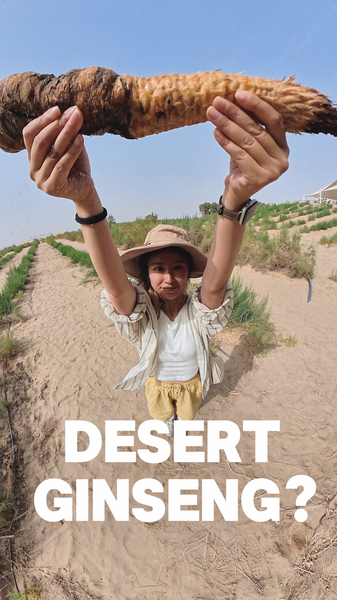On World Day to Combat Desertification and Drought, CGTN correspondent Liu Xiaoxian embarked on a journey into the vast dunes of the Xinjiang Uygur Autonomous Region in the Chinese mainland. There, amid rolling sands, she discovered an unlikely hero in the fight against land degradation: Cistanche, better known as desert ginseng.
Ancient herbal lore has long prized desert ginseng for its adaptogenic properties. Today, researchers are harnessing its hardiness to restore fragile ecosystems. By parasitizing native shrubs, Cistanche helps anchor loose sand, retain moisture, and prevent the creeping advance of desertified terrain.
Behind the scenes, cutting-edge desert labs study the plant's growth patterns and refine cultivation techniques. With data-driven trials, scientists have optimized host-shrub pairings and watering schedules that boost yields without draining scarce water resources.
On the sandy plains, large-scale plantations are proving that green gains can go hand in hand with economic returns. Farmers once plagued by shifting dunes now cultivate cistanche alongside traditional crops, tapping into growing markets for herbal remedies and health supplements.
For local communities, the desert ginseng is more than a plant: it's a source of new livelihoods and a symbol of sustainable innovation. Small businesses are emerging around processing, packaging and selling cistanche extracts, creating jobs and injecting resilience into rural economies.
As climate risks intensify worldwide, this blend of ancient wisdom and modern science offers a hopeful blueprint. From the sandy tracts of the Xinjiang Uygur Autonomous Region to other drylands across the globe, desert ginseng could spark a new chapter in the battle against desertification—and pave the way for greener, more prosperous futures.
Reference(s):
The desert ginseng: Fighting desertification one root at a time
cgtn.com




